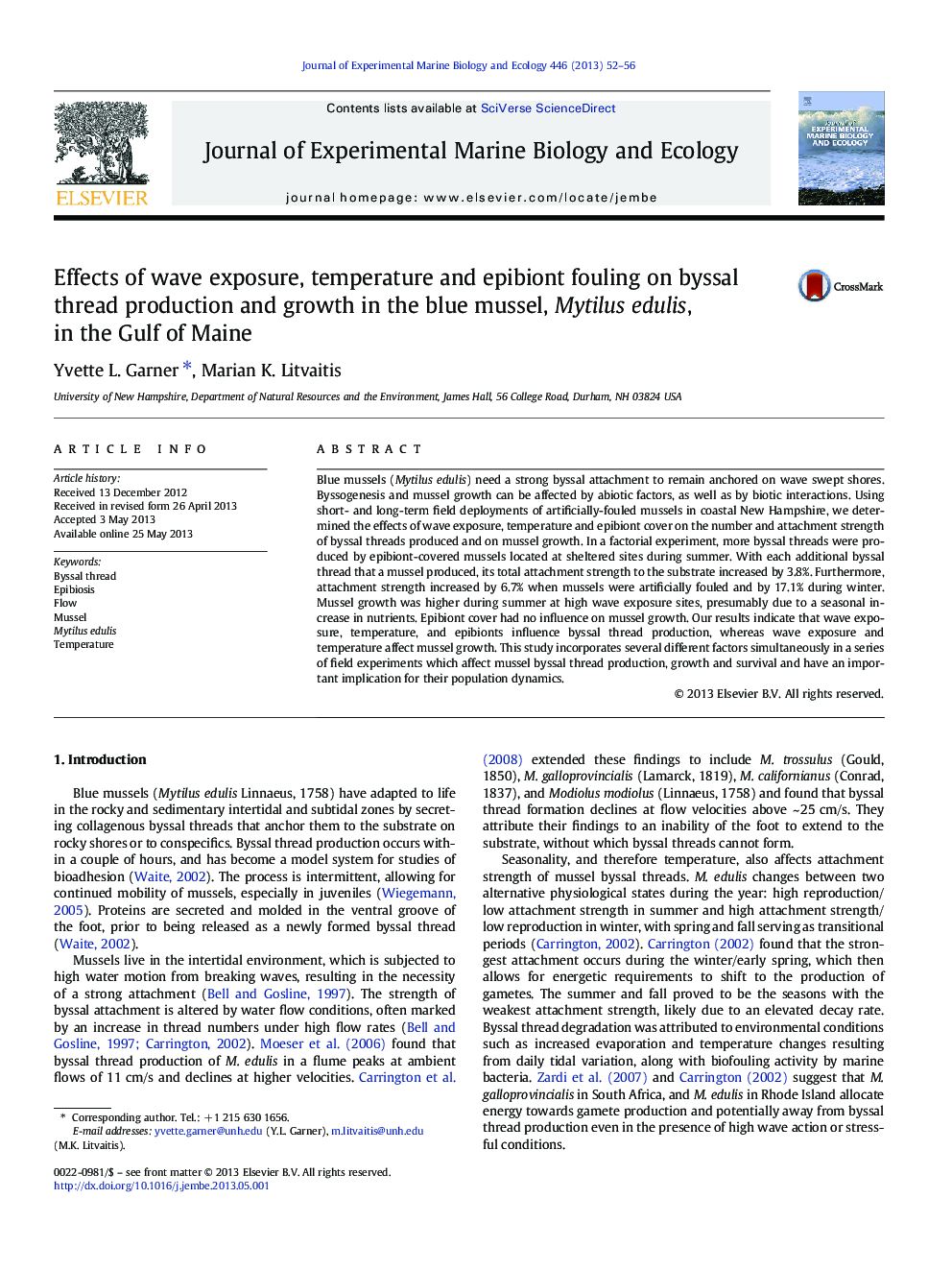| Article ID | Journal | Published Year | Pages | File Type |
|---|---|---|---|---|
| 4395705 | Journal of Experimental Marine Biology and Ecology | 2013 | 5 Pages |
•More byssal threads produced by fouled mussels at sheltered sites during summer.•Stronger byssal threads produced by epibiont fouled mussels during winter.•Mussel growth was greater at wave-exposed sites in the summer.•Epibiont fouling did not influence growth.
Blue mussels (Mytilus edulis) need a strong byssal attachment to remain anchored on wave swept shores. Byssogenesis and mussel growth can be affected by abiotic factors, as well as by biotic interactions. Using short- and long-term field deployments of artificially-fouled mussels in coastal New Hampshire, we determined the effects of wave exposure, temperature and epibiont cover on the number and attachment strength of byssal threads produced and on mussel growth. In a factorial experiment, more byssal threads were produced by epibiont-covered mussels located at sheltered sites during summer. With each additional byssal thread that a mussel produced, its total attachment strength to the substrate increased by 3.8%. Furthermore, attachment strength increased by 6.7% when mussels were artificially fouled and by 17.1% during winter. Mussel growth was higher during summer at high wave exposure sites, presumably due to a seasonal increase in nutrients. Epibiont cover had no influence on mussel growth. Our results indicate that wave exposure, temperature, and epibionts influence byssal thread production, whereas wave exposure and temperature affect mussel growth. This study incorporates several different factors simultaneously in a series of field experiments which affect mussel byssal thread production, growth and survival and have an important implication for their population dynamics.
